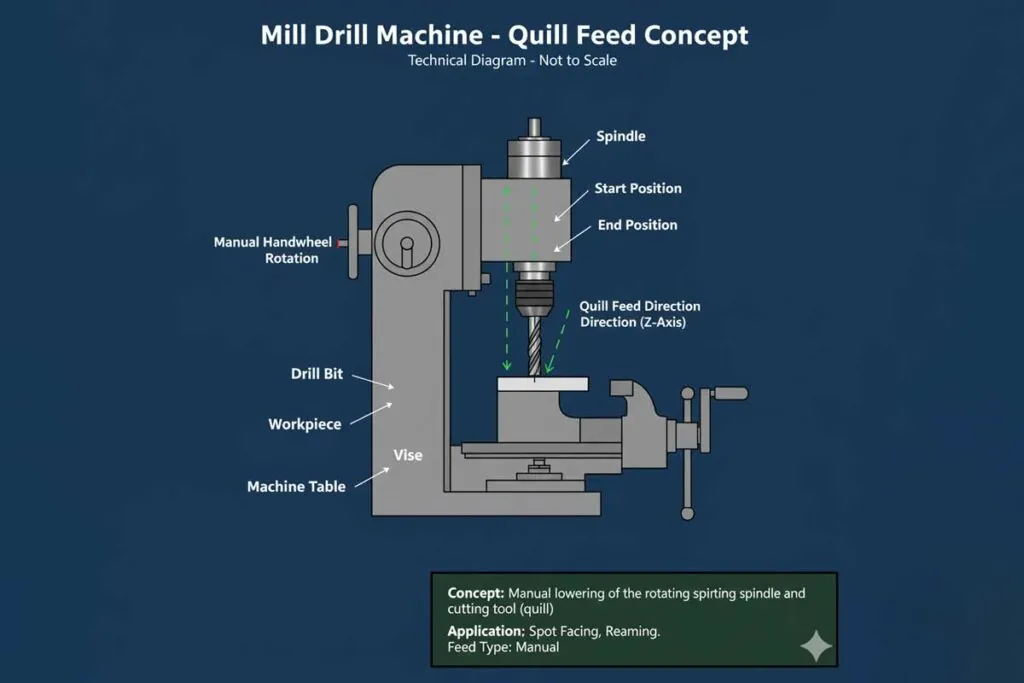Definition of Quill Feed
Quill feed in a mill drill machine refers to the controlled axial movement of the spindle through a quill mechanism, allowing the operator to advance the cutting tool into the workpiece. This feed can be manual (via a hand lever or fine-feed wheel) or power-assisted in more advanced models. The quill isolates vertical spindle movement from the machine head, which remains stationary, enabling more precise depth control during drilling or boring operations. Quill travel is usually limited, and its precision is critical for tasks requiring accurate hole depth, such as jig boring or reaming. Consistent quill feed mechanics are essential for maintaining alignment and repeatability.
Why It Matters for Band Saw and Mill Drill Machines
Quill feed is essential in operations where vertical tool control is required without moving the entire machine head. This is especially valuable in drilling processes where consistent plunge depth and perpendicularity must be maintained. It reduces setup time and ensures repeatability for multiple hole operations.
The ability to engage a fine-feed mechanism through the quill is critical for delicate machining tasks where manual control of feed rate prevents tool deflection, breakage, or surface deformation. Without a precise quill feed, machinists would have to rely on moving the headstock or worktable, introducing alignment errors and inefficiencies.”
Related Terms
Quill TravelFine Feed Control
Spindle Lock
Depth Stop
Boring Head
Column Movement
FAQ
How does Mill Drill Machine Quill Feed improve drilling precision?
Mill Drill Machine Quill Feed allows the operator to move the spindle vertically without repositioning the head, which maintains machine alignment and enables precise depth control. This direct axial motion is crucial when drilling holes to exact depths, especially in jig setups or repetitive production tasks.
What is the difference between manual and power Mill Drill Machine Quill Feed?
Manual Mill Drill Machine Quill Feed uses a lever or handwheel for operator-controlled movement, offering better tactile feedback for sensitive operations. Power quill feed automates this motion, improving consistency and reducing operator fatigue in high-volume drilling applications. However, manual feed often provides better control in delicate work.
When should the fine feed be used on a Mill Drill Machine Quill Feed?
Fine feed should be used on a Mill Drill Machine Quill Feed when performing operations requiring high accuracy, such as boring, reaming, or spot facing. The slow, controlled movement prevents tool chatter and enhances finish quality. It is particularly important in materials that are prone to work hardening or distortion.
What are the typical travel limits of a Mill Drill Machine Quill Feed?
Mill Drill Machine Quill Feed typically offers travel ranges between 2 to 5 inches, depending on the model. This limited travel is ideal for precision drilling but may require repositioning or table adjustment for deeper operations. Excessive use beyond travel limits can affect feed accuracy and wear quill components.



